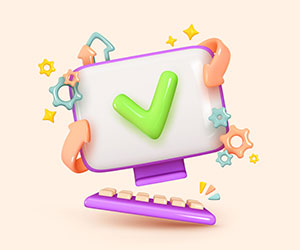Contact centres should consider using dialling equipment if they are regularly contacting large numbers of consumers or businesses. But where do you start in choosing the right dialling equipment for your contact centre?
In this article, Sinjon Price at Odigo explains the features to look for when buying a responsible outbound dialling solution.
Under What Circumstances Should a Contact Centre Consider Using Dialling Equipment?

Contact centres should consider using dialling equipment if they are regularly contacting large numbers of consumers or businesses. This could be for the purpose of outbound sales calls or telemarketing.
However, dialling equipment can also be beneficial for businesses with a large customer base who are billed monthly.
This is because, while many customers will take advantage of automated payment methods, such as direct debit, a percentage will still pay by cheque or online payment, which may require ongoing debt management.
Why Diallers Need to Support Contact Centre Compliance
For organizations serving UK customers, it’s important to know which regulations are in place, and who enforces them, as they may influence which management features you choose to prioritize.
- The Information Commissioner’s Office (ICO) takes the lead in tackling live telesales calls, automated marketing message calls and spam texts.
- The Telephone Preference Service (TPS) maintains the register of people and businesses who opt out of receiving unsolicited live marketing calls or unsolicited marketing faxes. This is conducted on behalf of the ICO, which undertakes enforcement action. Telephone numbers need to be registered for 28 days before they can expect unwanted marketing calls to stop.
- Ofcom is concerned with misuse of electronic communications networks whether malicious scams, or silent and abandoned calls resulting from mismanagement or technology.
- GDPR policies apply to all customer data, including anything generated from outbound campaigns.
As Ofcom’s concerns are primarily persistent misuse causing unnecessary annoyance, inconvenience, or anxiety, there are factors which influence their decision-making and therefore your choice of dialler, including:
- Silent calls are a major problem. Any technology that prevents silent calls is valuable.
- Abandoned calls are preferable to silent calls, but Ofcom’s aim is still 0%. The 3% abandon call rate is not an official guideline mentioned in their Misuse statement, and sticking to this is no guarantee of avoiding penalties, especially if other factors are present.
- Two or more occurrences of misuse to the same recipient or number within 72 hours.
- Misuse occurring at unsociable hours.
- Prolonged ringing periods or ringing for <15 sec, essentially too long or too short to get to the phone.
- Not providing a suitable recorded message, which should play within 2 seconds of connection or someone speaking, depending on the technology used, to:
- Identify the company,
- Explain the purpose of the call,
- Provide details of a basic-rate number which the customer can call so they can decline further calls,
- NOT include any marketing content.
What to Look for When Buying a Responsible Outbound Dialling Solution
Here are the operational, management, and compliance features you should look for when buying a responsible outbound dialling solution:
What Do You Need?
Diallers are increasingly affordable and accessible for all businesses. The features that are most valuable, however, will depend on your contact centre size and your intended use. They fall roughly into two categories:
- Operational features
- Management and compliance features
The ability to integrate with your existing technology stack or future ecosystem is important for success.
It’s also worth considering your future business plans and potential needs. A great deal of technology is now cloud-based, and this helps with scalability, software maintenance, and adapting to your growing business.
However, as call quality often depends on agents with visibility on customer interaction history, the ability to integrate with your existing technology stack or future ecosystem is important for success – not just basic functionality.
Operational Features to Look Out For
Here are 8 operational features to look out for in your next dialler:
1. Dialler Modes
A dialler mode is an automated way to standardize outbound calls. Automated diallers usually have several dialler modes and, importantly, your activities may mean the ability to pick, choose, and switch is an advantage.
Here are the three most well known:
- Predictive: A high-efficiency strategy to maximize the impact of sales campaigns and agent utilization. Numbers are dialled in anticipation of expected agent availability. Minimizing silent or abandoned calls depends on the sophistication of the software, the pacing algorithm, and how often it adjusts to real-time conditions.
- Progressive: Just as it sounds, this progressively calls one number after another only when an agent is available. This could be part of post-sales service where a negative experience like a dropped call could impact loyalty more significantly.
- Preview: This gives an agent time to prepare for a call by previewing customer data before the number is called and is good for campaigns around sensitive or complex issues where high levels of personalization are important for success. This mode also gives the agent the option to accept or reject the call.
2. Manual Options and Customization
Automation and efficiency often go hand-in-hand. However, there are times when it’s an advantage to be able to set the limits, manually dial, or temporarily switch between options.
This may be particularly appropriate in a very dynamic contact centre environment where rapidly changing conditions may have a knock-on effect on the number of abandoned calls and therefore Ofcom compliance.
For example, being able to set or alter the speed of a predictive dialling pacing algorithm can be beneficial, or to set ‘objectives’ which will automatically pause campaigns when certain metrics have been reached, such as X rejected offers.
3. Call Blending
This coordinates inbound and outbound calls using the same set of agents. It’s an efficient and effective strategy, utilizing agents to increase revenue during quieter periods rather than dividing the workforce, which can simply drive up costs.
Routing, unified reporting, and complete customer histories underpin the kind of data utilization which contributes to great customer experience strategies.
Call blending makes integrating an outbound dialler with existing solutions both more important and more beneficial. Routing, unified reporting, and complete customer histories underpin the kind of data utilization which contributes to great customer experience strategies.
4. Omnichannel Outbound
Depending on the purpose of your campaign, calls may no longer be the most effective strategy. Many customers won’t answer calls from numbers they don’t recognize or calls they aren’t expecting.
With trust levels and open rates on text messages and instant messenger (IM) high, it makes sense to incorporate these, and other channels, into campaigns.
However, to avoid bombarding customers, these campaigns also need to be properly managed, monitored, and sent to the appropriate customers based on your client records.
Entire outbound digital sequences can be built to strategically offer added value or increase the likelihood of engagement.
Providing quality omnichannel customer service is so important. To find out more, read our article: Why Is Omnichannel Customer Service Important?
5. Answer Machine Detection (AMD)
This feature has really divided opinions because of its pros and cons. Depending on the accuracy, it can make much more effective use of agent time, preventing them from listening to machine messages and manually handling unproductive calls.
The pause between the call connecting and connection with an agent, however, can impact customer experience.

The most significant problem, depending on the sophistication of the software, comes because of false positives.
This happens when a customer answers, but is misidentified as an answering machine and cut off. The result is a silent call, which Ofcom considers particularly harmful.
One way to mitigate this is by playing a recorded message even when the call does connect to an answering machine.
This would prevent silent calls and instead result in an abandoned call, which is preferable, but still not desirable.
False negatives can also occur when there is a failure to detect an answering machine. An agent would then be connected to the call. At low levels, this is probably not a significant issue.
6. Other Automated Detection Systems
To practically eliminate silent calls and the pause associated with AMD, some solutions connect all calls to an automated introduction message.
In some cases, with an advanced predictive algorithm, this can even be a message recorded by the agent predicted to answer the call. This step can save agents from repetitive introductions or calls where customers immediately hang up.
7. Agent Experience Features
Although the dialler is primarily concerned with automating the process of dialling, agents still need to interact with the software. This means the agent-facing experience is an important and sometimes overlooked element in the selection process.
For example, think about:
- How is the call presented?
- What customer history is accessible?
- Are other solution elements like knowledge bases and automated or guided workflows compatible?
- Can scripting or prompts be provided where appropriate?
- Is the dashboard customizable?
8. Scheduled Callbacks
As part of a campaign or during inbound contact management, scheduling a day and time for a callback can be a great way to maintain customer engagement and satisfaction.
Automated dialling for these events helps reduce the chances of an agent getting distracted and failing to follow up on reminders to fulfil an important customer promise.
Management and Compliance Features to Look Out For
Whether outsourced or in-house, organizations are viewed as responsible for their contact centre’s activities, and so accurate campaign record-keeping and established protocols for monitoring prove intent to comply.
Here are 2 management and compliance features to look out for when buying your next dialler:

1. Configuration and Campaign Management
Configuration steps help tailor your different campaigns to the best-suited strategy. The ability to duplicate the settings on successful campaigns easily and change campaigns that are already running makes campaign performance easier to control.
It also enables a varied callback approach, which can ensure you reach customers. A prime application of this is debt collection.
2. Reporting
Without setting targets, tracking performance, and conducting AB testing, outbound campaigns are unlikely to meet expectations.
For this reason, being able to easily digest and understand which strategies work using visual dashboards and data analysis helps to create repeatable, predictable results.
What Benefits Can You Expect?
The primary benefits of the right choice of dialler are efficiency and workforce optimization.
There is also a host of secondary benefits depending on the choice of dialler and level of integration, including:
- Improved campaign success – Reporting, monitoring, and tailoring of outbound strategies help deliver results.
- Reduced agent frustration – Easy-to-use dashboard and access to customer records simplify working processes.
- Improved customer experience – Tailored campaigns and informed agents deliver much greater value to customers.
- Compliance and brand perception – Ofcom takes action because consumers don’t like or are even upset by pauses, silent calls and abandoned calls. This means compliance isn’t just about protecting business, it’s about positive customer relationships.
It also helps to be aware that there can be a grey zone or overlap of functionalities when diallers are chosen independently to other technology, like inbound contact centre software or a CRM. Talk to both current and prospective providers about what you want to achieve with a dialler to ensure ROI.
Thanks to Sinjon Price, Pre-sales consultant at Odigo
If you are looking for more information on diallers, you should read these articles next:
- The Different Types of Dialler Explained
- How You Can Get the Best out of Your Outbound Dialler
- 18 ways to Improve Outbound Dialling
- How Many Calls Should an Outbound Agent Make?
Author: Megan Jones
Reviewed by: Robyn Coppell
Published On: 18th Sep 2023 - Last modified: 18th Feb 2025
Read more about - Technology, Dialler, Editor's Picks, Odigo, Outbound dialling, Outbound Dialling Guide

















We also feel integrity and financial stability should also be revised. Recent media publications have been damaging the Dialler industry recently so we want to emphasise on the character, history and financial stability of any service provider as another consideration when choosing the right Dialler provider.